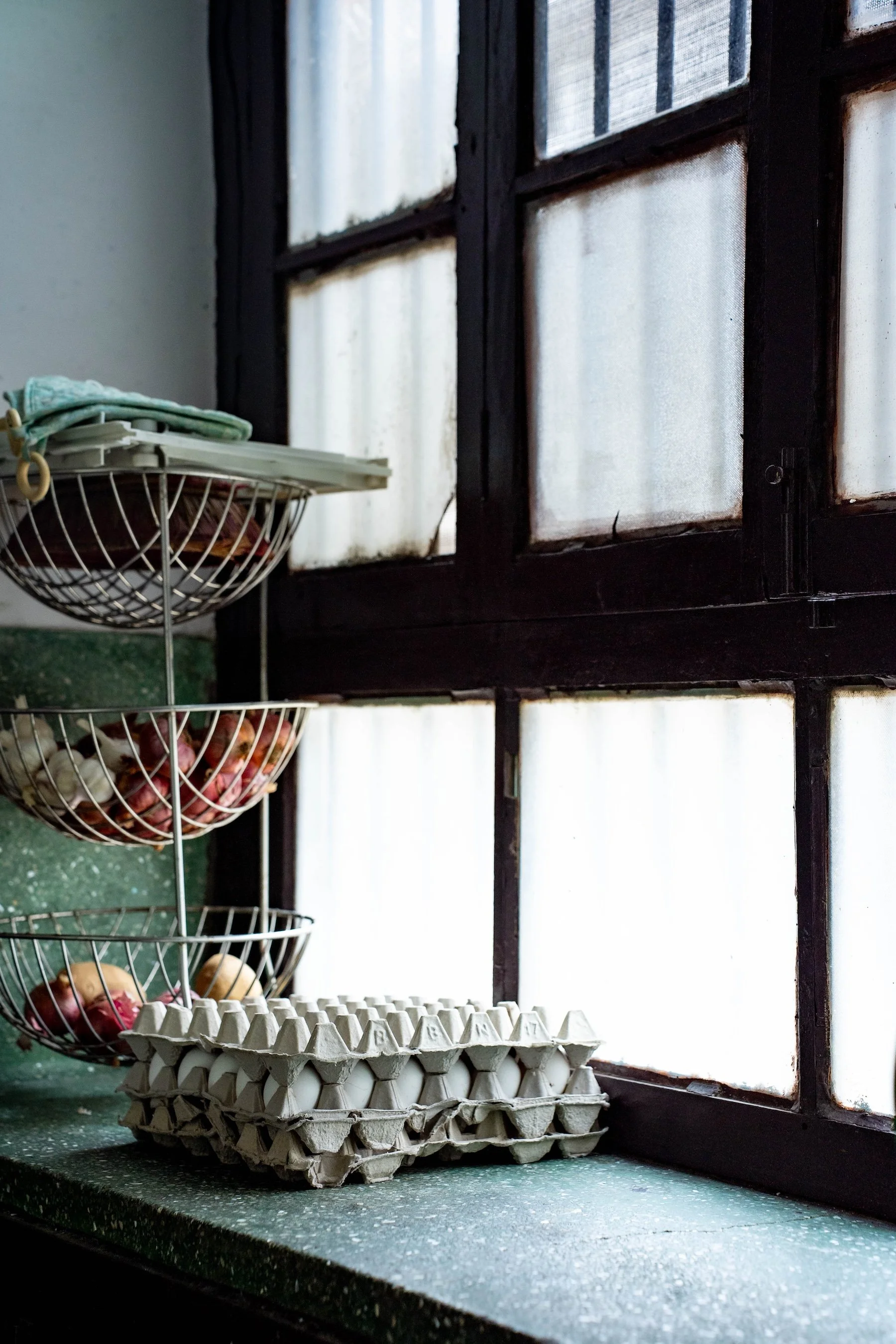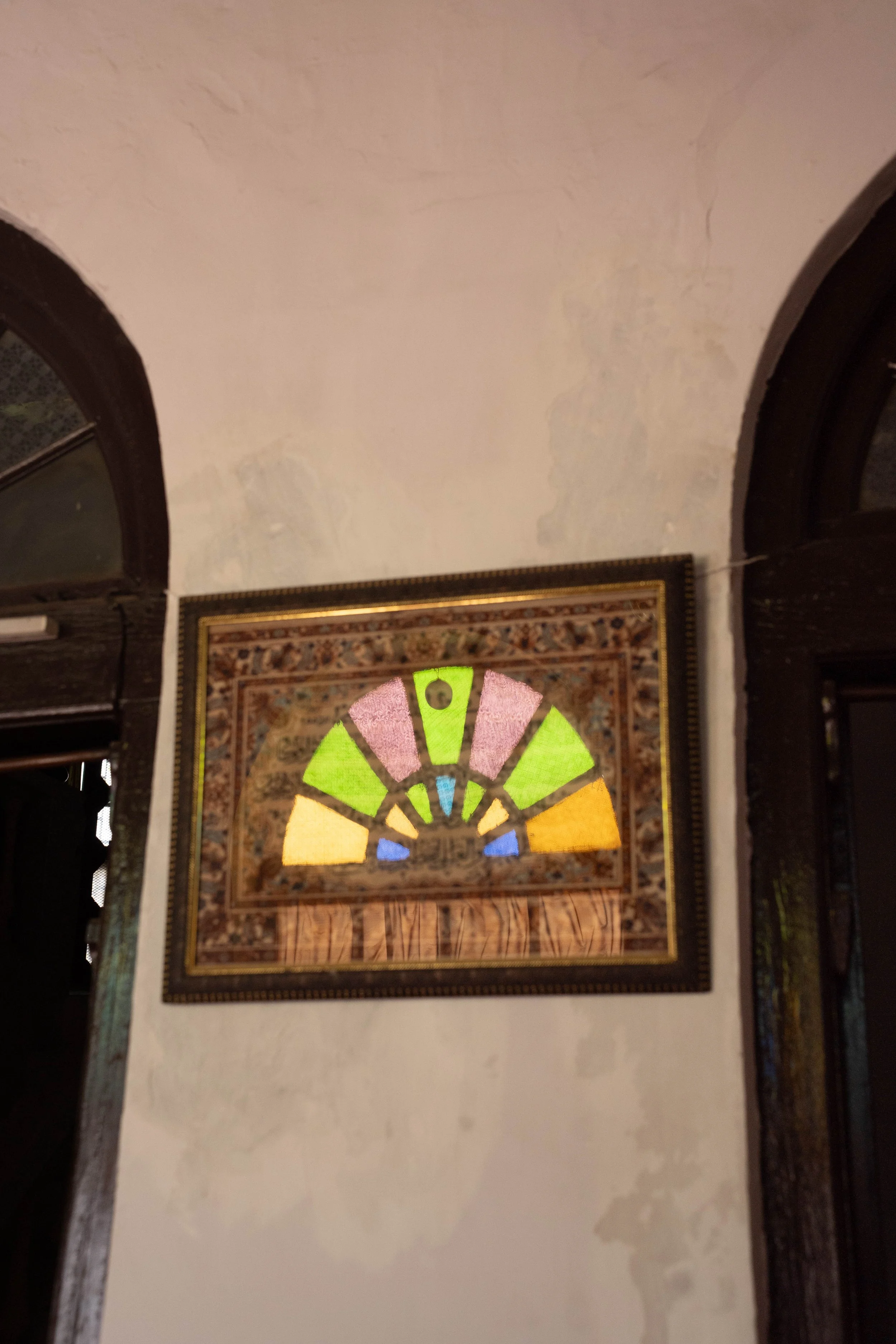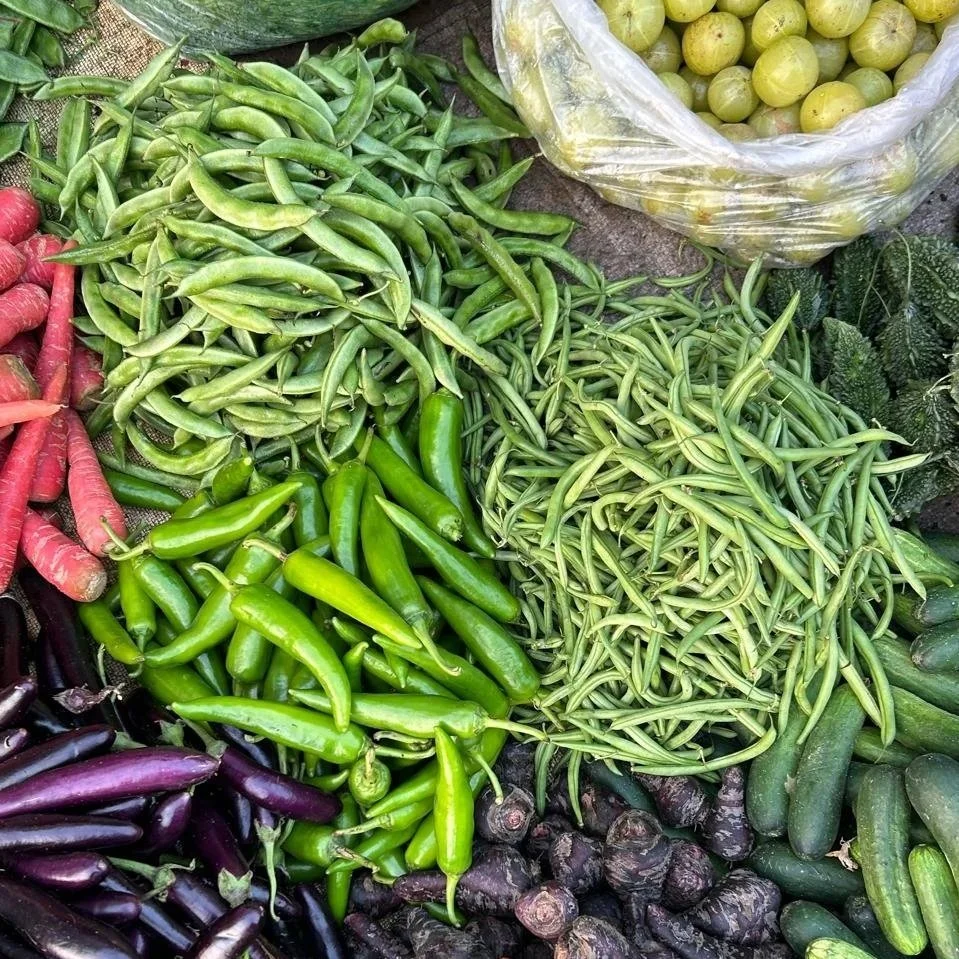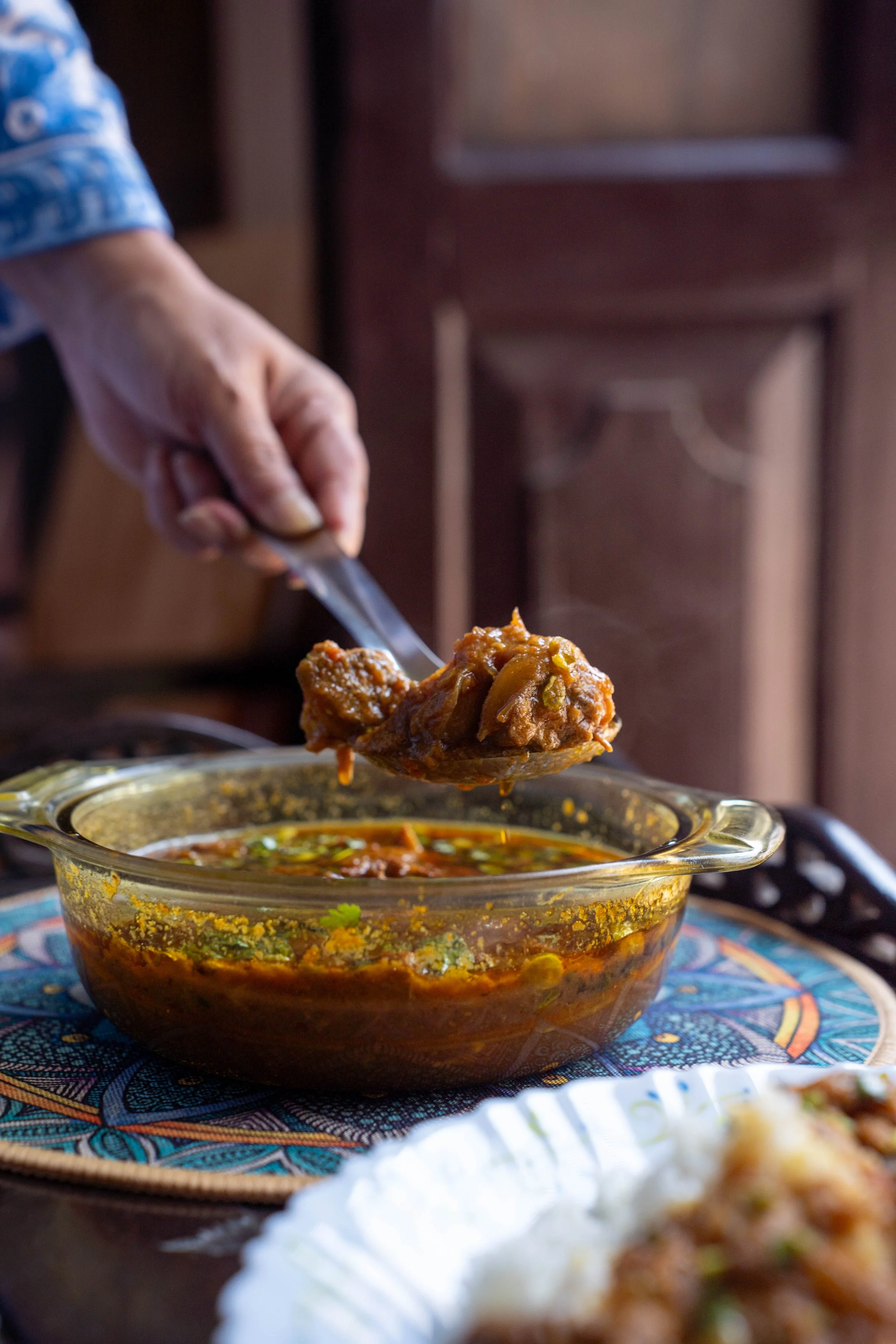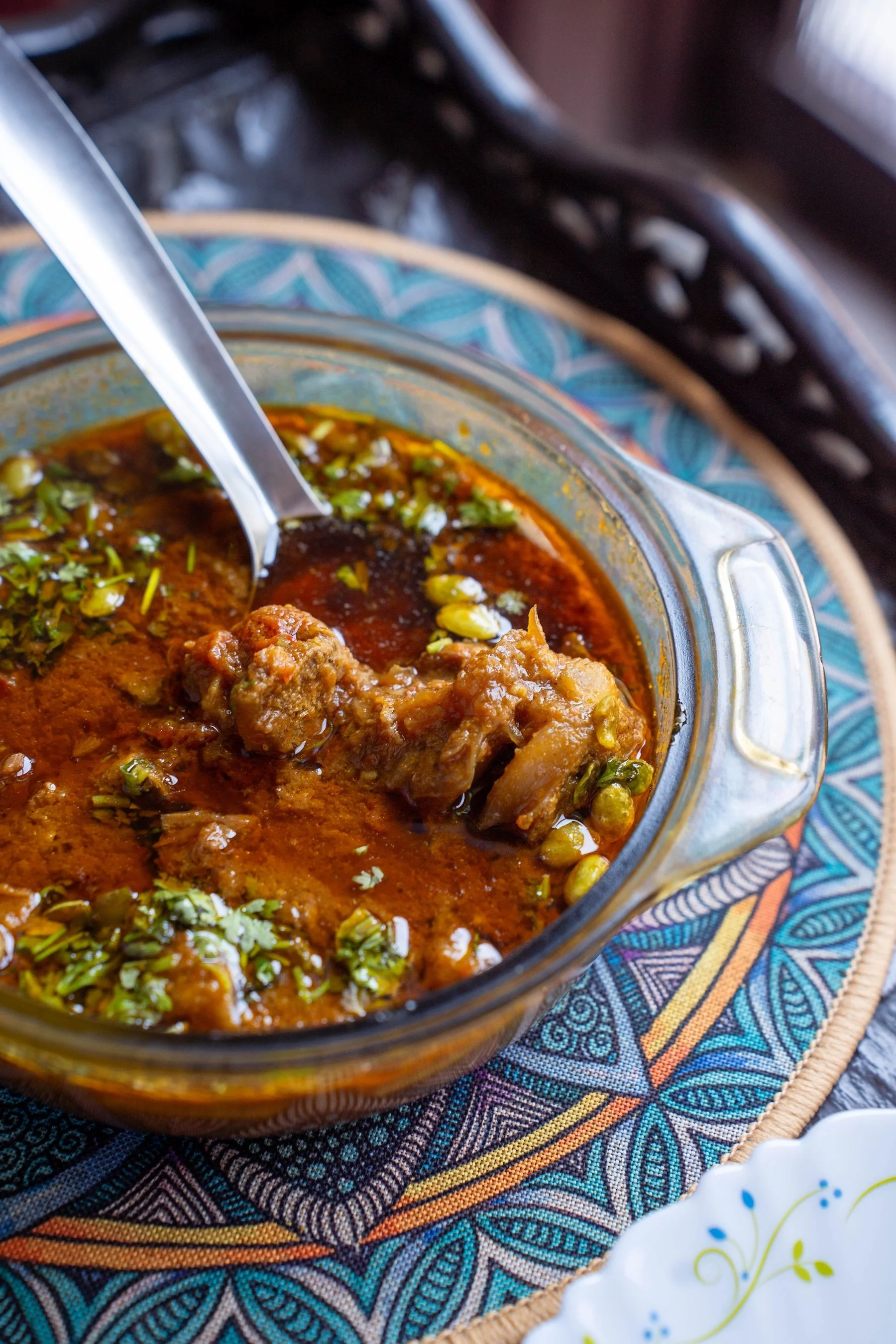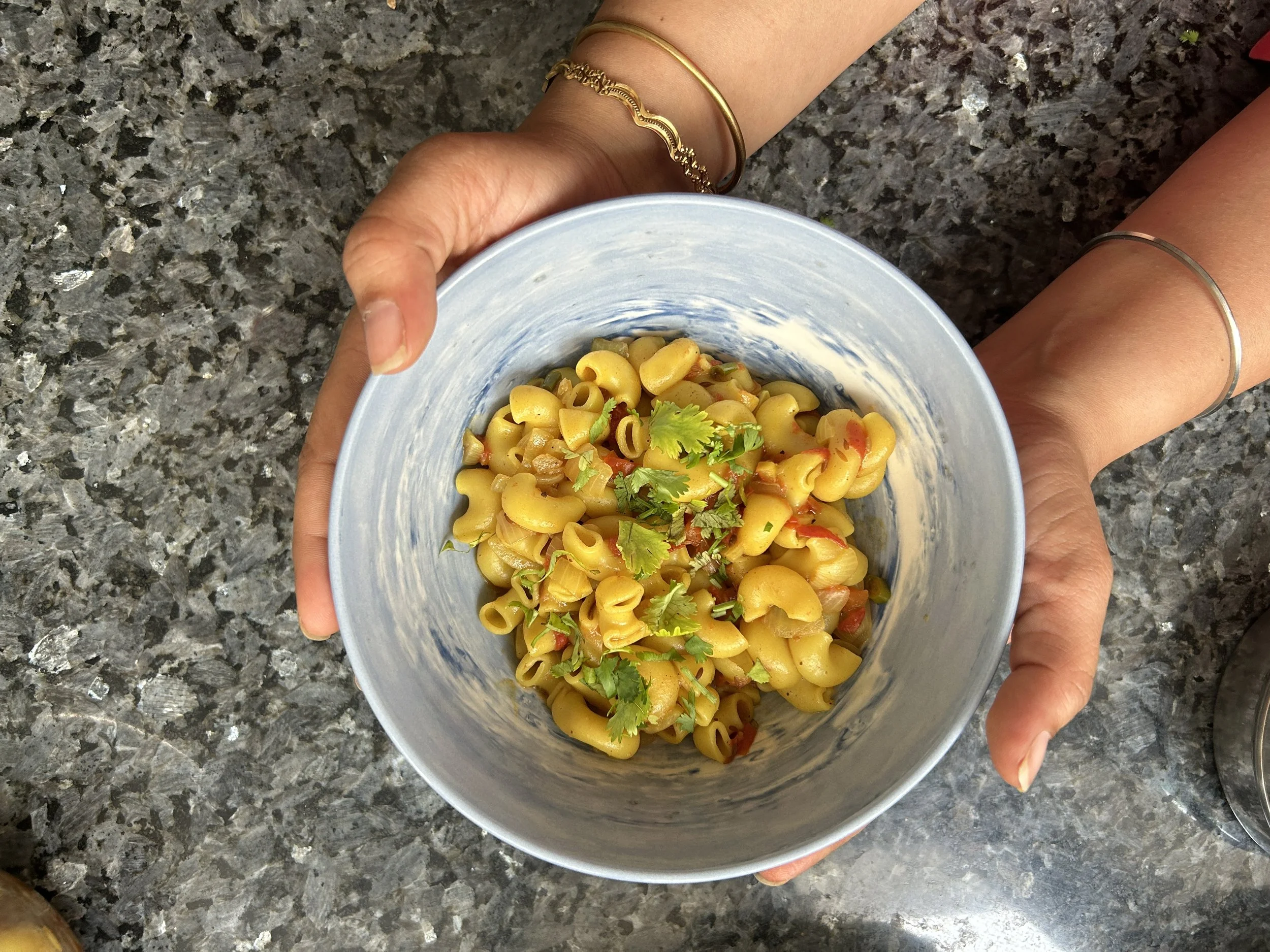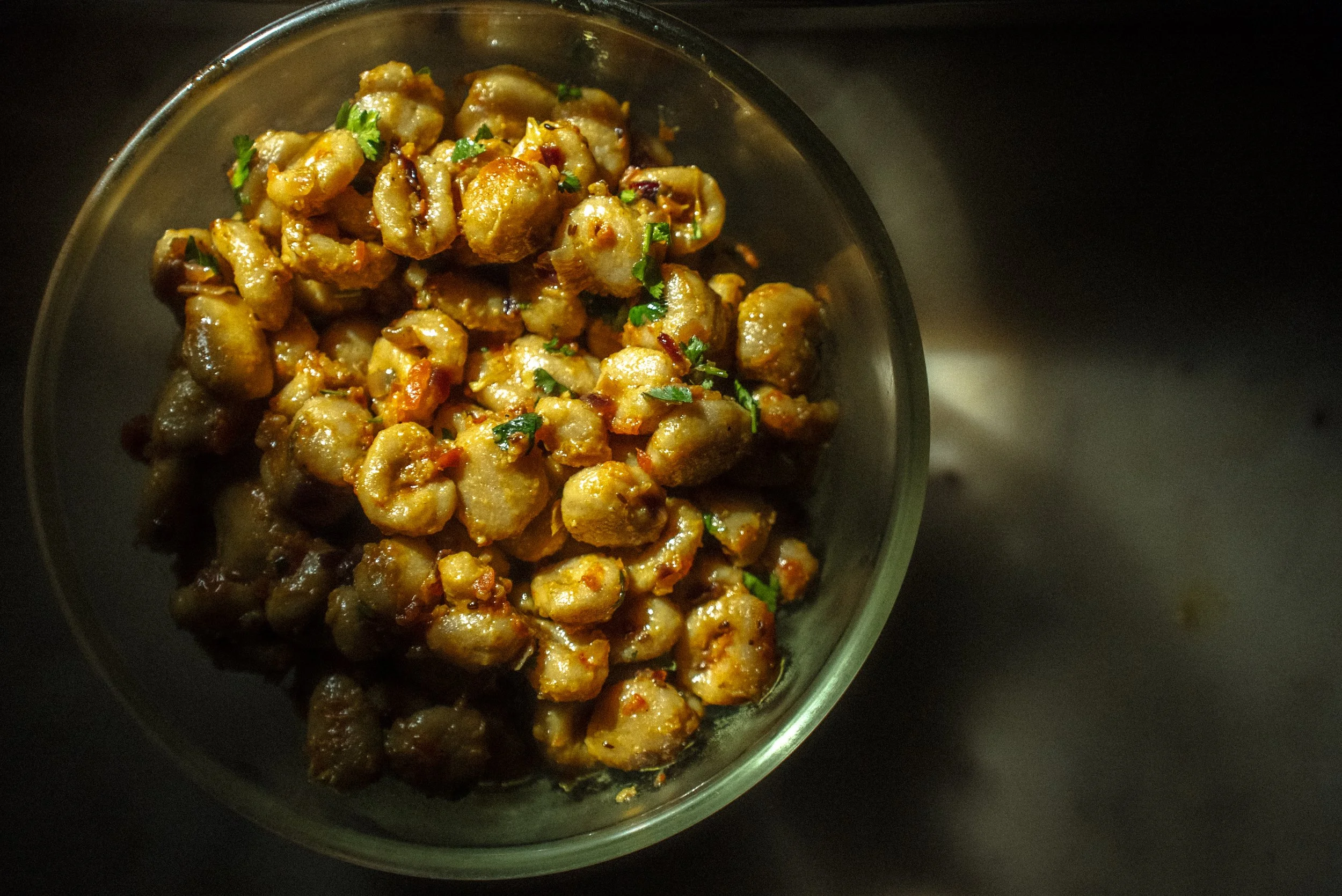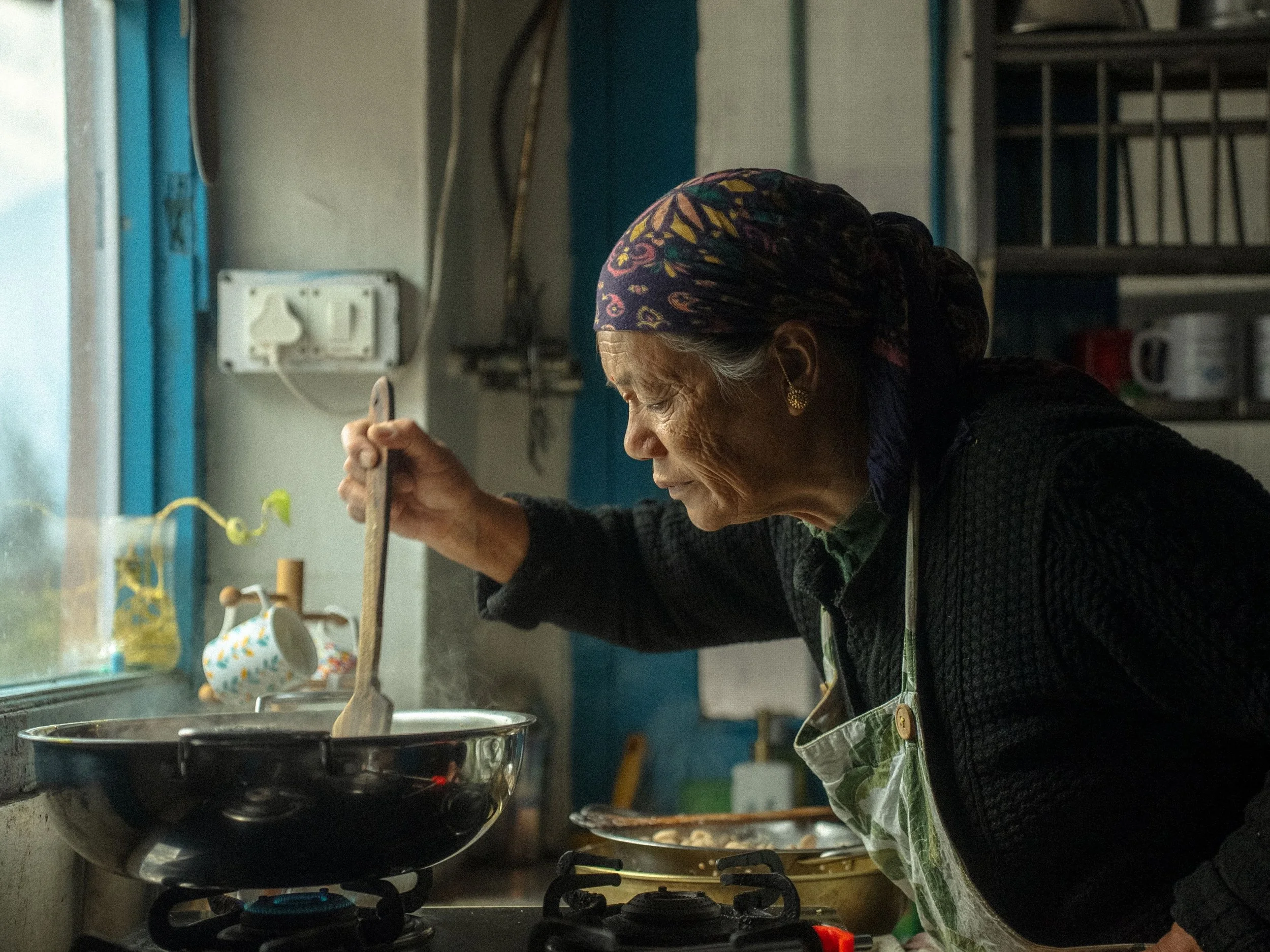#1000Kitchens: Sheeba Iqbal’s Sem ke Beej ka Salan Is a Forgotten Winter Specialty

At Goya, celebrating home cooks and recipes have always been at the heart of our work. Through our series, #1000Kitchens, we document recipes from kitchens across the country, building a living library of heirloom recipes that have been in the family for 3 generations or more. In this edition, Anubhuti Krishna speaks to Sheeba Iqbal about a salan made with the seeds of local flat beans seeds. This winter specialty is typically cooked with mutton.
This season’s stories are produced in partnership with the Samagata Foundation—a non-profit that champions meaningful projects.
Sheeba Iqbal (lovingly called Sheeba aapa) belongs to a Lucknow that seems to be slowly slipping out of our hands. The Lucknow where courtyards are large but families are larger, where friends drop in unannounced but cannot leave without sharing a meal, and where what you cook does not matter as much as who you eat it with.
Her recipes also belong to a bygone Lucknow. With their everyday simplicity, they have kept the timeless legacy of the city’s home kitchens alive at a time when we seem to be only looking for the most popular food, ignoring generations of culinary diversity.
“The whole world talks of our pulaos and kababs (she refuses to call Lucknow’s biryani, biryani, because it is really a pulao), but there is so much more to our cuisine. And this food is hidden in our home kitchens not in restaurants,” she asserts as we sit down to talk in her sprawling drawing room. Sheeba aapa’s home has a large central courtyard, old fashioned jhoomers (glass lamps) and vintage furniture. Her classic Lakhnavi rehaish (lifestyle) and her lehza (the manner of speaking) is of a time when everyone spoke beautiful Urdu. It is an Urdu laced with terms I have forgotten, and it reminds me of what my mother always said about Lucknow’s culture, “Hum Lucknow walon ki zabaan aur tameez hi humari pehchaan hai, (our mannerism and our language is our identity).”
Sheeba aapa learnt cooking early in life. Her mother was a professor at the Aligarh University, and the responsibility of cooking her own food and arranging it for her younger siblings was hers from an early age. “Amma would cook the main dish and leave it in the fridge but I had to make dal-chawal and put the meal together. When she travelled to other universities, I had to cook the whole meal on my own,” she says. it made her adept at the basics, but Sheeba aapa was never passionate about cooking elaborate recipes.
Until she married into a family in Lucknow.
“All they spoke about was food. Intense discussions about the tandoori parathas from this nanbai, the galawat ke kabab from that kababchi, the salan from this bawarchi, the korma from that one, were commonplace. Seeing their passion, I could not resist falling in love with food,” she reminisces. It is here, in her married home that she learnt to cook elaborate recipes including sem ke beej ka salan.
Salans are a staple on the Lakhnavi dining table (now that the dastarkhwans are spread only on special occasions). They are an everyday curry made with basic spices like haldi-dhania-mircha. The term salan borrows its name from the word salsala which means gravy in Urdu. It’s a curry that changes with season and is often cooked with a combination of meat and vegetables — potatoes, bottle gourd, colocasia in hotter months and beetroot, carrots and beans in winter. Sem ke beej ka salan, however, is a lesser-known version because of the novelty of the main ingredient: the seed. Available only in the thick of the winter, these seeds of the local flat bean, sem (pronounced same), are sourced from mature beans. Sometimes you can find them in the market, otherwise you tear open the beans one by one (just like shelling peas) to extract them. They have to then be peeled, boiled, and fried before being added to the salan.
Sem are the seeds of the local flat bean (top left). Credit Anubhuti Krishna
“This was not a very popular dish in our large family. My husband, however, loved it so much that his amma would especially make a portion for him all through winter. Like most recipes, I learnt this from her and added my own twists to it,” says Sheeba aapa, adding that she hasn’t cooked the dish since losing her husband a few years ago.
It was after his passing that Sheeba aapa began working with food professionally. It started with a home dining experience called aab-o-daana, serving home-style Awadhi food. Unfortunately, she had to shut this due to opposition from her extended family. After a very brief hiatus, she took over the responsibility of running the only homestyle restaurant in Lucknow, Naimatkhana, bringing to life many dying recipes from the city’s home kitchens.
Today, Sheeba Iqbal has made a name for herself as a custodian of home style Lucknow food.
“While I grew up in Aligarh, I was most exposed to Awadhi food. My mother was from Lucknow so she mostly cooked Awadhi food at home. She would often tell my father, who was from Ghazipur in east UP, how bland his food was!” she laughs.
Today, her identity is that of an Awadhi food expert with deep insight into the Muslim ways of cooking, and recipes common among all communities of the syncretic Lakhnavi culture, like keyoti ki daal (a mix of chana dal and urad dal) and sagpaita (black urad/moong and spinach, sometimes with bathua leaves). She is the first person I go to with my questions on the cuisine. And, every guest I have taken to Naimatkhana as a part of our Lucknow experiences, including top chefs from across the world, has fallen in love with her food.
Sheeba aapa is also a treasure trove of cooking wisdom, which she shares while making the salan — how the gravy in Lucknow’s salan is always runny and much thinner than salans in Delhi or Hyderabad, how adding a pinch of salt helps brown onions faster, and how covering the pan and leaving the curry on dum after adding the seeds ensures a rich rogan.
Sheeba aapa’s cooking also takes me back to mum’s — she has the same comfort with her ‘andaz’ (approximation of using spices and ingredients), the same rhythm of a seasoned cook, and the same modesty of a mother, who despite being a master of her recipes never takes credit for her skills. As I watch her move with the precision of an orchestra composer, I feel blessed to be a part of the generation that has had access to the finest of home recipes in their real habitat, the humble home kitchen.
SHEEBA AAPA’S SEM KE BEEJ KA SALAN
Ingredients
500 g mutton on the bone
2 medium onions sliced lengthwise
1 tsp fresh ginger paste
1 tsp fresh garlic paste
2 medium fresh tomatoes, pureed
3 tsp coriander powder
1 tsp turmeric powder
1/2 tsp red chilli powder
1 tsp homemade garam masala powder
Salt, to taste
1-2 bay leaves
1/2 cup mustard oil
1 bunch fresh coriander
500 g fresh sem ke beej
Method
Wash the mutton and keep aside.
In a pressure cooker, add half the oil and heat it until it smokes.
Next, reduce the flame and add the onions, bay leaf and a pinch of salt. The salt helps the onion to brown faster.
Once done (should take about 4-5 minutes), add in the mutton and saute it until nicely browned (about 8-10 minutes).
Once done, add the ginger garlic paste and stir for a couple of minutes so that they are not raw.
Next, add turmeric, chilli powder and coriander powder with a splash of water so that the spices do not burn, and cook until the oil starts to separate from the meat.
Next, add salt to taste and just enough water to cover the meat.
Close the lid and cook it for fifteen minutes on low flame.
While the mutton cooks, peel the seeds and then boil for 2-3 mins in hot water.
Pat dry and deep fry in a shallow pan in remaining mustard oil for about 1-2 minutes and keep aside .
After about fifteen minutes, turn the flame off and let the steam release on its own from the pressure cooker.
Once open, add the tomato puree and simmer for another 2-3 minutes until it blends well. Add water to adjust the consistency if needed. The sauce should coat the back of a spoon but not be thick at all.
When done, add the seeds, more water if needed; cover the cooker with a plate and let it simmer for 5-7 minutes or until it begins bubbling. You do not have to pressure cook at this stage.
Turn the flame off and keep the cover on for another few minutes (opening it hurriedly will result in losing the roghan).
After about five minutes, open the lid, add the garam masala and coriander and mix well.
Serve hot with freshy made roti or rice.
Words by Anubhuti Krishna. Photograph by Sanskriti Bist. Art by Namrata Vansadia.
Special thanks to our partners.
ALSO ON GOYA

